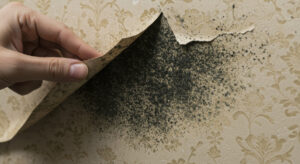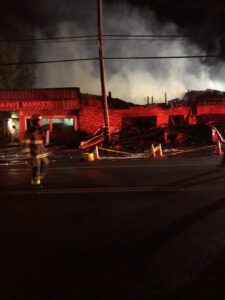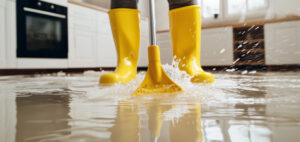Encountering a biohazard can be daunting and poses significant health risks if not addressed properly. Whether it’s a residential or commercial space, understanding the intricacies of biohazard cleanup Sacramento is essential.
Having an expert to assist you can make all the difference during these uncertain events. This guide delves into what these processes entail, their critical importance, and how West Coast Fire & Water provides top-notch services to ensure your environment is safe and secure.
What is Biohazard Cleanup and Remediation?
Biohazard cleanup involves removing, cleaning, and disinfecting substances that pose biological risks. Remediation goes a step further to repair and restore the affected area to its pre-contamination state.
These processes are crucial in various scenarios, including crime scenes, industrial accidents, infectious disease outbreaks, and more. The primary goal is to eliminate biohazardous threats and ensure the area is habitable and safe.
What Are Common Biohazards?
A biohazard in your home or business can be a shocking or overwhelming event. These events also come with their own unique risks that can lead to more dangerous results later.
Blood and Bodily Fluids
Blood and bodily fluids can carry various bloodborne pathogens, including HIV, hepatitis B and C, and other infectious diseases.
Medical Waste
Discarded needles, syringes, contaminated dressings, or other materials generated in healthcare settings can cause puncture wounds and infections if not handled properly.
Pathogens
Bacteria, viruses, fungi, or other microorganisms can cause infections or diseases if they enter the body through the mouth, nose, eyes, or an open wound.
Animal or Human Remains
Decomposing bodies or carcasses can harbor harmful pathogens and insects, and also release unpleasant odors.
What Should I Do If I Encounter a Potential Biohazard?
Biohazards are materials that pose a threat to human health. They can be infectious (bacteria, viruses), toxic (chemicals), or radioactive. If you encounter a biohazard, it’s crucial to react calmly and follow these steps to minimize risk:
1) Identify the Biohazard
Utilize visual cues and context to consider the biohazard’s origin.
Visual Cues
Look for warning signs or labels with biohazard symbols. Medical waste containers, syringes, and bloody bandages are common signs.
Location
Consider the context. Biohazards are more likely in medical facilities, research labs, or after an accident.
Remember
If unsure about the nature of the material, prioritize safety and assume it’s hazardous.
2) Maintain Distance and Avoid Contact
Never approach or touch a potential biohazard!
Create a Barrier
Use whatever is available to establish a physical barrier between yourself and the biohazard. This could be a table, chair, or even clothing.
Do Not Touch
Avoid direct contact with the biohazard or anything potentially contaminated by it.
Leave the Area
If possible, evacuate the area calmly and carefully, ensuring others don’t come into contact.
3) Decontaminate (If Necessary)
Skin Exposure
Immediately wash the affected area thoroughly with soap and running water for at least 20 minutes. Remove any contaminated clothing and dispose of it safely in a sealed plastic bag.
Eye Exposure
Flush your eyes with clean, lukewarm water for at least 20 minutes, holding your eyelids open. Seek medical attention immediately.
Inhalation
Move to fresh air and seek medical attention if you experience difficulty breathing, coughing, or dizziness.
4) Report the Biohazard
Alert Authorities
Inform building security, facility management, or emergency responders about the biohazard location and nature (if identified).
Follow Protocol
If you have workplace protocols for biohazard incidents, follow them precisely.
5) Seek Medical Attention (When Necessary)
Exposure Concerns
Even if you don’t experience immediate symptoms, consult a healthcare professional to discuss potential risks and recommended follow-up.
Existing Conditions
If you have a weakened immune system or chronic health conditions, seek medical attention promptly after biohazard exposure.
6) Additional Tips
Personal Protective Equipment (PPE):
If you have access to gloves, masks, or safety glasses, wear them when dealing with a biohazard.
Don’t Spread Contamination
Avoid tracking contaminated materials on your shoes or clothing to other areas.
Document the Incident
If possible, take pictures (from a safe distance) of the biohazard for reporting purposes.
Why is Professional Biohazard Cleanup Important?
In the event of a biohazard, improper or inexperienced cleanup could potentially lead to dangerous outcomes including the spread of disease. Here are some of the reasons why hiring a professional biohazard specialist is important:
Health and Safety
The foremost priority is safeguarding health. Professionals are trained to handle hazardous substances without compromising their or others’ safety. Powerful chemicals or advanced machines used to clean up hazardous substances can do more harm than good if used by an inexperienced cleaner.
Compliance
Adhering to local, state, and federal regulations is crucial to avoid fines or worse legal trouble. Professional services ensure that biohazard waste is disposed of correctly, avoiding legal complications.
Efficiency
Time is of the essence in these situations. Professionals expedite the cleanup process, reducing downtime and allowing normal operations to resume swiftly.
How Do Professionals Approach Biohazard Cleanup?
The approach is meticulous and structured ensuring that professional biohazard cleanup specialists are thorough:
Assess the Scene
First, the specialist will conduct a thorough evaluation to identify the extent and type of biohazard, forming the basis for the cleanup plan.
Containing Potential Hazards
To prevent the spread of contaminants, the affected area is isolated using specialized equipment. Along with containing the affected area, biohazard cleanup specialists will also ensure their protection through personal protective equipment.
Removal and Cleaning
Utilizing specialized equipment and chemicals, professionals meticulously clean the area, ensuring all biohazardous materials are eradicated. Special chemicals may be used during this step to neutralize biohazardous substances.
Disinfection
This step involves using EPA-approved disinfectants to eliminate any lingering pathogens.
Verification
The final phase ensures the area is completely safe, often involving testing for the presence of any biohazards.
Safe and Secure Biohazard Cleanup You Can Trust
Facing a biohazard can be overwhelming, but you’re not alone. Contact West Coast Fire & Water online or by phone at 916-945-9665 for expert guidance and efficient biohazard cleanup and remediation services. Trust us to restore safety and tranquility to your environment.



